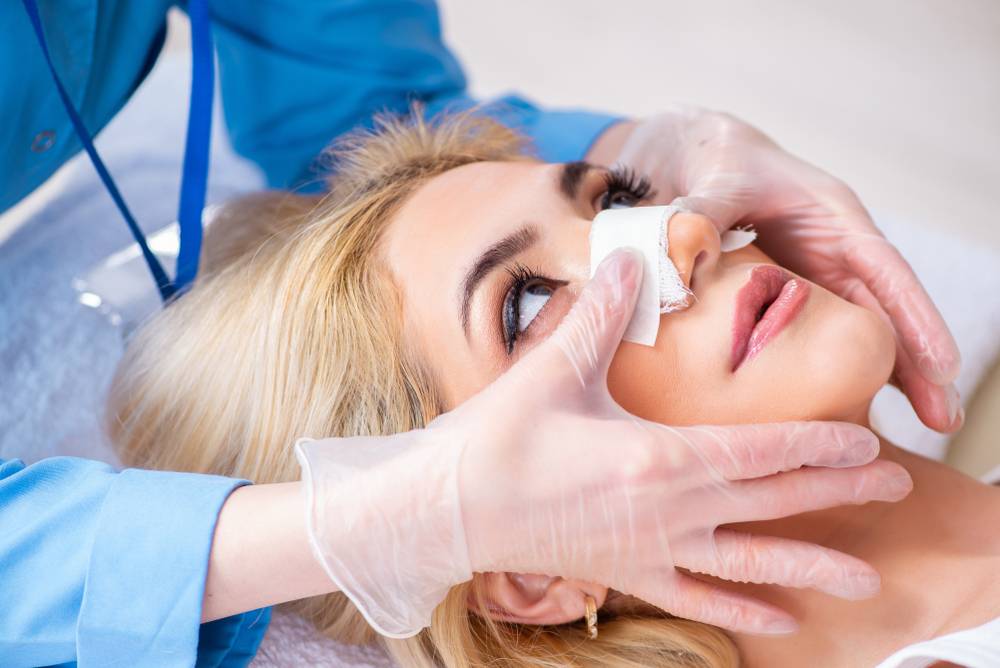
Are you looking for a Revision Rhinoplasty job that offers the best results? Dr. Frati is one of the UK’s most renowned rhinoplasty surgeons, and is trusted by many celebrities and influencers, of whom depend on his results in order to make their living.
Take a look at some of Dr Frati’s nose job before and after images, or read on to learn more about revision rhinoplasty in the UK.
Want to talk to one of Dr. Frati’s team? Call us today!
What is Revision Rhinoplasty?
Revision rhinoplasty, also known as secondary rhinoplasty, is a surgical procedure performed to correct or improve the results of a previous nose surgery. It is typically undertaken when the initial rhinoplasty did not achieve the desired outcome, or when there are functional or aesthetic issues that need to be addressed.
Revision rhinoplasty often involves reconstructive surgery using cartilage to provide structural support for the nasal tip and bridge. When there is a lack of cartilage in the nasal septum, alternative sources like the ear or ribs may be used. In some cases, soft tissue from other parts of the body, such as the hairline or fascia, may be harvested to address abnormalities. Additionally, scar tissue from previous surgeries may require skin grafts or soft tissue flaps to correct breathing difficulties. It is important for revision rhinoplasty candidates to be healthy, at least 18 years old, and have realistic expectations about the potential outcomes of the procedure.
By choosing Dr Frati for your revision nose job Surgery, you will receive a specialised assessment from Dr. Frati himself. His expertise in rhinoplasty surgery ensures thorough evaluation, unbiased advice, and various treatment options, including the option of not proceeding with surgery. Dr Frati is able to prioritise skill, compassion, and professionalism over price, and he will take the necessary time to explain the potential risks and benefits of revision rhinoplasty. Additionally, computerised 3D imaging may be used during your consultation to provide an approximate visualisation of the potential outcomes of the surgery.
What does Revision Rhinoplasty Involve?
Revision rhinoplasty presents a higher level of complexity compared to primary rhinoplasty.
Dr Frati is an expert in the field of rhinoplasty, with specialised knowledge and extensive experience in performing various types of revision procedures, ranging from minor corrections to complex reconstructive surgeries that may involve rib grafting. At our dedicated Rhinoplasty London clinic on Harley Street, we provide the necessary environment for revision rhinoplasty surgeries. It is important to note that revision rhinoplasty procedures typically require more time than primary rhinoplasty, with an average operating time of 4-5 hours under general anaesthesia.
The specific approach taken during a revision rhinoplasty procedure varies based on the individual issues requiring correction, but typically follows these general steps:
Revision Rhinoplasty Steps
1. Anaesthesia: Revision rhinoplasty is typically performed under general anaesthesia, ensuring you are asleep throughout the procedure.
2. Incision: The surgeon will make incisions in the same location as the previous surgery, usually inside the nostrils, to minimize visible scarring.
3. Correction of deformities: Cartilage or bone will be removed or reshaped to address any deformities. Additional cartilage or materials may be used to rebuild or reshape the nose if necessary.
4. Repositioning the nose: The surgeon will reposition the nose as required to achieve a more balanced and symmetrical appearance.
5. Closing the incisions: The incisions will be closed, and splints or packing will be placed inside the nostrils to help maintain the new shape during the healing process.
6. Recovery: The recovery period for revision rhinoplasty varies depending on the extent of the procedure. It generally takes several weeks for swelling and bruising to subside. During this time, it is important to avoid strenuous activities and follow the surgeon’s post-operative care instructions.

Why Do People Opt for Revision Rhinoplasty?
For those who are considering revision rhinoplasty, then they are going to need the services of a skilled surgeon who has experience. Revision rhinoplasty applies to those patients who have the desire to improve their appearance and in many cases the function of the nose. Often, these procedures are some of the most challenging procedures that plastic surgeons undertake.
Patients might choose to undergo this procedure because they are dissatisfied with the surgery they have received in the past. However, Dr Frati will explain that further rhinoplasty still might not rectify the problem that was not solved during the previous surgery while it might not solve any deformities that came as a result of previous surgery.
In many cases, scar tissue from the previous rhinoplasty is often a problem in revision cases and this can limit the outcome that patients see from revision rhinoplasty as it can still recur even if the revision rhinoplasty is successful. To add to this, revision rhinoplasty will often need to use cartilage to replace any damaged or deficient cartilage that might have been removed during a previous surgery.
There are instances where the nasal septum might have deviated and that might require correction in order to alter the appearance but also improve function. What’s more, there may be a nasal obstruction and that could be caused by the collapse of the tip cartilages which can result in external valve collapse. Any deviation of the nasal septum and deficiencies in the upper lateral cartilage are common in revision cases and this can cause internal valve collapse which will then require cartilage grafts that are also known as spreader grafts. These help to open up the narrowed area.
Do I need Revision Rhinoplasty?
Revision rhinoplasty is often sought by patients who are dissatisfied with the outcomes of a previous nose job performed by another surgeon. Reasons for dissatisfaction can include a perceived imbalance in facial features, a nose that still appears too large for their face, or difficulty breathing due to the initial rhinoplasty. Even in the hands of skilled surgeons, revision rhinoplasty carries a higher revision rate compared to primary rhinoplasty. On average, approximately 15 to 20% of patients who undergo primary rhinoplasty may require a corrective procedure to address aesthetic or functional concerns they may have. If you feel you fit in to this category, please get in touch with our team today!
It is crucial to understand that no surgeon can provide a guarantee for the outcome of any surgical procedure, particularly in the case of a complex revision rhinoplasty. Various factors, such as the healing process, can vary significantly among patients and are beyond the surgeon’s control.
How long should I wait for Revision Rhinoplasty?
To ensure the best outcome, it is advisable to wait until you have fully healed from your initial rhinoplasty before considering a revision procedure. At Dr Frati’s Harley Street Surgery, we recommend waiting at least 12 months from the first surgery before scheduling a consultation for revision rhinoplasty. Undergoing surgery sooner than this may risk causing additional structural damage to the nose, which could be challenging, if not impossible, to rectify adequately. It is essential for patients considering revision rhinoplasty to conduct thorough research and have a realistic understanding of the procedure’s potential outcomes, establishing clear expectations from the outset.
Is Revision Rhinoplasty Riskier than standard Rhinoplasty?
Revision Rhinoplasty is a very difficult surgical procedure. It can be challenging due to the presence of dense scar tissue resulting from previous rhinoplasty surgeries. Scar tissue can distort the typical features of the nose, compromising the final results even after a well-executed revision procedure. Additionally, many noses following primary rhinoplasty may have damaged or insufficient cartilage, which is often necessary for proper reconstruction in secondary rhinoplasty.
Revision Rhinoplasty is considered riskier than standard rhinoplasty
It is important for patients considering revision rhinoplasty to have realistic expectations, as even a corrective procedure may not completely resolve cosmetic abnormalities that were not adequately addressed in the initial surgery or may have developed as a result of primary rhinoplasty. Evaluating the success or failure of a nose job can be subjective, as even a successful revision rhinoplasty may not meet the patient’s personal expectations. Patients who were already dissatisfied with the outcome of their initial procedure are more likely to experience dissatisfaction following revision rhinoplasty.
Prior to undergoing revision rhinoplasty at Harley Street Surgery, it is essential for patients to understand and acknowledge all the potential risks and complications associated with the procedure, including the possibility of an unsatisfactory outcome. Setting realistic expectations regarding the achievable results is crucial before being considered for a revision rhinoplasty.
Some risks with revision rhinoplasty can involve:
- Scarring: Incisions made in the same location as the previous surgery can increase the risk of scarring.
- Unsatisfactory results: Despite the surgeon’s best efforts, there is a possibility that the final results of the revision rhinoplasty may be unsatisfactory.
- Loss of sensation: The surgery can lead to temporary or permanent loss of sensation in the nose or surrounding areas.
- Bleeding: Like any surgical procedure, there is a risk of bleeding during or after revision rhinoplasty.
- Infection: There is a risk of infection after the procedure, which can delay healing and increase the likelihood of complications.
- Breathing difficulties: Temporary or permanent breathing difficulties or obstruction may occur as a result of the surgery.
- Complications with anesthesia: As revision rhinoplasty is performed under general anesthesia, there is a possibility of anesthesia-related complications, such as allergic reactions or respiratory failure.
When considering revision rhinoplasty, it is crucial to note that these risks and complications are uncommon and can be mitigated by selecting a skilled and experienced surgeon for the procedure, as well as adhering to the surgeon’s pre- and post-operative guidelines.
To ensure the most appropriate approach for your individual circumstances and to address any concerns regarding potential risks and complications, it is highly recommended to undergo a thorough consultation with a qualified and experienced revision rhinoplasty surgeon.
Revision Rhinoplasty with Dr Frati

Dr. Frati has spent years building up a reputation for being one of the best Rhinoplasty Surgeons in the UK. He is one of the most talked about consultants on Harley Street based on the highest levels of performance and results. He is proud to boast that he undergoes some of the most cutting edge techniques when at work.
Dr. Frati is often relied on by those who use their aesthetic looks to earn a living. Many celebrities such as James Argent and Mario Falcone have used Dr. Frati for Rhinoplasty. Other influencers also use his services; if you are looking for the best in the business Dr. Frati is your Doctor.
Dr Frati offers initial consultations, so if you are ready for the next step in your rhinoplasty journey, whether it be a primary or a revision nose job, please get in touch today and one of our friendly team will give you a call at an appropriate time. Likewise if you have any questions, our helpful team will be able to answer them for you.
